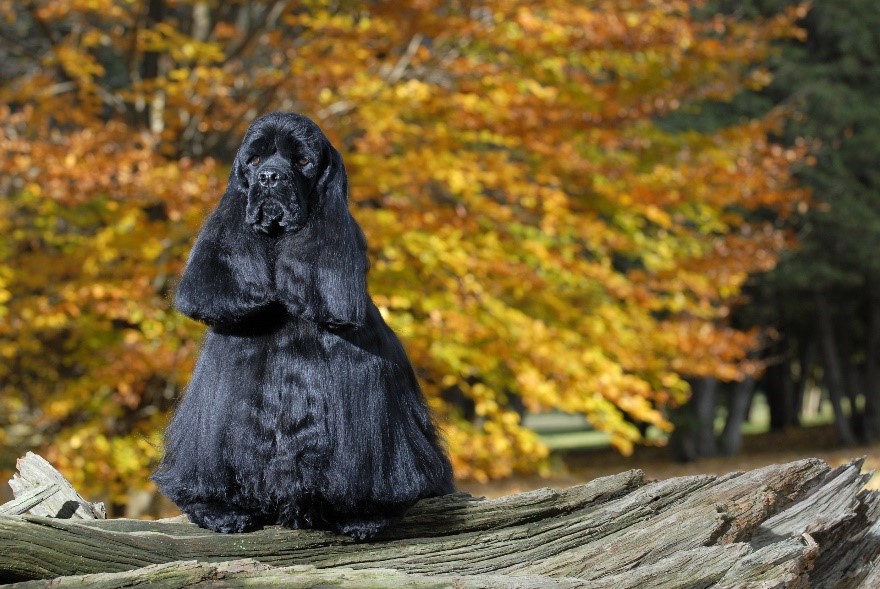CHAPTERS
Navigate to chapter
► Chapter One: Understanding Cocker Spaniels
► Chapter Two: Things to Know Before Getting a Cocker Spaniel
► Chapter Three: Purchasing Cocker Spaniels
► Chapter Four: Caring for Cocker Spaniels
► Chapter Five: Meeting Your Cocker Spaniel’s Nutritional Needs
► Chapter Six: Training Your Cocker Spaniel
► Chapter Seven: Grooming Your Cocker Spaniel Properly
► Chapter Eight: Breeding Cocker Spaniels
► Chapter Nine: Tips for Showing Your Cocker Spaniel
► Chapter Ten: Keeping Your Dog Healthy
Chapter One: Understanding Cocker Spaniels

The Cocker Spaniel makes a wonderful pet, but it is not the right choice for everyone. If you think that this breed might be a good fit for you, take the time to learn everything you can. In this chapter you will find an overview of the Cocker Spaniel breed including the breed history and the two types of Cocker Spaniels. This information will help you make your decision. In the next chapter you will receive practical information about keeping Cocker Spaniel dogs that you should also consider before deciding.
The Cocker Spaniel is a friendly and playful breed that makes an excellent family companion as well as a talented hunting dog. While these dogs may not chase down a deer or attack a wild badger, they have a natural talent for flushing game and for retrieving. This skill comes from the breed’s development from field spaniels – the Cocker Spaniel is also known for its endurance and speed, though you may not expect that from such a small dog.
In terms of size, the Cocker Spaniel ranges from about 13.5 inches to 16 inches (34 to 41 cm) depending on the sex and type – the average weight for the breed is between 24 and 32 pounds (11 to 15 kg). American Cocker Spaniels tend to be at the lower end of the spectrum for height and weight while English Cocker Spaniels are a little larger. Though this breed was developed for hunting, these dogs are not overly active or energetic. They have a moderate energy level and their exercise needs can generally be met with a 30-minute walk daily as well as some active play time.
In addition to being a talented sporting breed, the Cocker Spaniel is also a great family companion. These dogs are naturally very sweet and gentle and they can become very affectionate with family. Cocker Spaniels love to be around people and they generally do not do well when left alone for long periods of time – separation anxiety is a big problem for this breed. Because these dogs are also very smart, they require plenty of mental stimulation in addition to physical exercise. If the Cocker Spaniel gets bored, he is prone to developing problem behavior.
Some Cocker Spaniels bark more than others, but they are generally not considered to be a yappy breed. These dogs will usually bark at strangers, but they warm up fairly quickly. Cocker Spaniels get along well with other dogs and they are also good with cats and other household pets as long as they are socialized and trained from a young age. Poorly bred or improperly socialized Cocker Spaniels have a tendency to become snappy and they may be fearful of strangers as well. This is why socialization is especially important for this breed.
In addition to their sweet natures and friendly personality, Cocker Spaniels are also known for their beautiful coats. The coat for this breed is medium-length and it is very silky and fine. Cocker Spaniels can have flat or wavy coats, though curly coats are generally not preferred. Not only do their coats have some wave to them, but they also exhibit a lot of feathering on the ears, chest, abdomen, and legs. The hair tends to be a little shorter on the face and head and longer on the body, though many people trim the hair on the back to keep it manageable.
Because the Cocker Spaniel’s coat grows long, regular grooming is required. You should plan to brush your dog’s coat on a daily basis and keep a wide-toothed comb on hand to work through tangles. To keep your dog’s coat healthy and trimmed you will also need to have him professionally groomed every 6 to 8 weeks or so. Cocker Spaniels are moderate shedders, so regular brushing and grooming will help to keep that under control as well. This breed may not be a good choice for allergy sufferers.
In terms of health, the Cocker Spaniel is a fairly healthy breed with a long lifespan averaging 12 to 15 years. One of the most common health problems seen in this breed is ear infections, due to their long and furry ears. Working Cocker Spaniels may also sustain injuries from working in the field. For major health problems, Cocker Spaniels are prone to several inherited conditions like congenital deafness, progressive retinal atrophy, glaucoma, and hip dysplasia. These dogs are also prone to allergies, autoimmune hemolytic anemia, cherry eye, epilepsy, hypothyroidism, otitis externa, and patellar luxation. Responsible breeding practices can help reduce the risk for these and other conditions.
Summary of Cocker Spaniel Facts
Pedigree: exact origins unknown, developed from field spaniels in Spain
AKC Group: Sporting Group
Breed Size: small to medium
Height: 13.5 to 16 inches (34 – 41 cm), depending on sex/type
Weight: 24 to 32 lbs. (11 to 15 kg)
Coat Length: medium-long; shorter on the head and back
Coat Texture: silky and fine; flat or wavy
Shedding: moderate, frequent grooming needed
Color: many colors and patterns; solid as well as parti-color, often with tan color points
Eyes and Nose: dark; black or brown, depending on type
Ears: drop ears; large, long and well feathered
Tail: docked short, carried horizontally
Temperament: sweet, affectionate, lively, playful, loyal, intelligent, trainable
Strangers: may bark at strangers
Children: generally good with children but should be supervised around young children
Other Dogs: generally good with other dogs if properly trained and socialized
Training: intelligent and very trainable
Exercise Needs: moderately active, does not require a great deal of exercise; 30-minute daily walk recommended
Health Conditions: allergies, autoimmune hemolytic anemia, cherry eye, congenital deafness, epilepsy, eye problems, hip dysplasia, hypothyroidism, otitis externa, and patellar luxation
Lifespan: average 12 to 15 years
The exact origins of the Cocker Spaniel are unknown but there are references to spaniel-type dogs dating all the way back to the 14th century. It is generally assumed that Cocker Spaniels originated in Spain, as mentions of spaniels can be found in the writings of Edward of Norwich, the 2nd Duke of York. It wasn’t until the 18th century, however, that the spaniel was written about in any detail – in 1801, Sydenham Edwards wrote about the two types of “land spaniel”, the hawking/springer spaniel and the cocking/cocker spaniel.
Continue Reading…
Want to read the entire thing?

